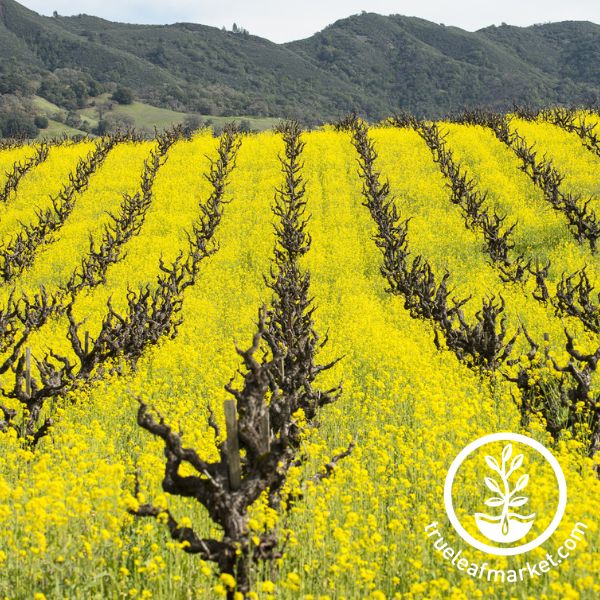Mustard - The Golden Cover Crop
By Lara Wadsworth
Many of us think of mustard as a crop grown on its own. This is true. It is great for many reasons. But, it also pairs well with many other cover crop seeds to offer a variety of benefits. Plant mustard in the late summer or early spring, and you will receive the following benefits.
Benefits of Mustard Cover Crops
Prevent Soil Erosion
All cover crops reduce soil erosion. It is simply a fact that when there are plants in the soil rather than being exposed, the soil is less likely to be eroded away by wind or water. However, Mustard has particularly large roots for a cover crop that can reach anywhere from one to five feet below the surface! This ensures that soil stays put and the plants will not be swept away by high winds or storms.
Weed Suppression
Mustard is famous for weed suppression. Simply by planting it ahead of your cash crop and terminating it at the right time, you can significantly reduce the weed population in your field that growing season. Mustard is high in a compound called glucosinolates(see second source). Without getting too technical, it discourages undesired seed germination when this compound is in high concentrations. Chop or mow down the mustard BEFORE it flowers to get the maximum benefits(see first source). Then, wait at least fourteen days before planting your next crop (6-8 weeks of rest is required after terminating a Mighty Mustard® cover crop).
Mighty Mustard® Kodiak
Mighty Mustard® Trifecta Power Blend 
Reduce and Prevent Disease
The glucosinolates mentioned above are also to blame for this plant’s outstanding ability to reduce diseases in many crops. Studies have proven using mustard as a cover crop prior to the growing season reduced fusarium, verticillium, pythium, pink root rot, and more (see first source). Chop or mow down the mustard just before flowering to activate the necessary compound.
Protect Water Quality
Mustard plants can have roots digging up to 5 feet deep. This means it prevents soil erosion, but also reduces runoff that can contaminate waterways. Its deep roots help with this, but simply using Mustard as a cover crop reduces overall pesticide and fertilizer usage (see below), which are some of the most common substances to pollute our waterways.
Reduce Pest Presence
Have you ever eaten a mustard-based condiment or other food and been metaphorically kicked in the face with that wasabi-like flavor? Yeah, bugs don’t like that feeling, either. Again, the star of the show here is that ‘magical’ compound glucosinolates, which make this plant an effective biofumigant. When activated, this natural compound produces that spicy-like flavor and smell that deters many pests. Mustard has been proven to reduce the presence of wireworms, common fruit flies (Drosophila melanogaster), houseflies (Musca domestica), black vine weevil eggs, white-fringed weevil larvae, symphilids, and nematodes (see second source). The Mighty Mustard® seed varieties are best for this purpose, but be sure to allow the appropriate 6-8 weeks of rest after terminating the cover crop before planting. This time is needed for the glucosinolates to deplete for new seeds to grow.
Reduce Fertilizer Use
Lastly, you will find that you need to use less fertilizer for your cash crop after using Mustard as a preseason cover crop. This works because of the deep taproot system of the mustard plant. It is known as a ‘nutrient scavenger’ that works deep below the soil’s surface to bring up leeching nutrients that may be too deep for most other plants to reach (see second source). Although mustard is not the biggest biomass producer, it develops a moderate amount, accompanied by this unique ‘mining’ ability that will benefit your following crop significantly. Remember to wait at least two weeks or more between terminating the mustard and planting your next crop.

